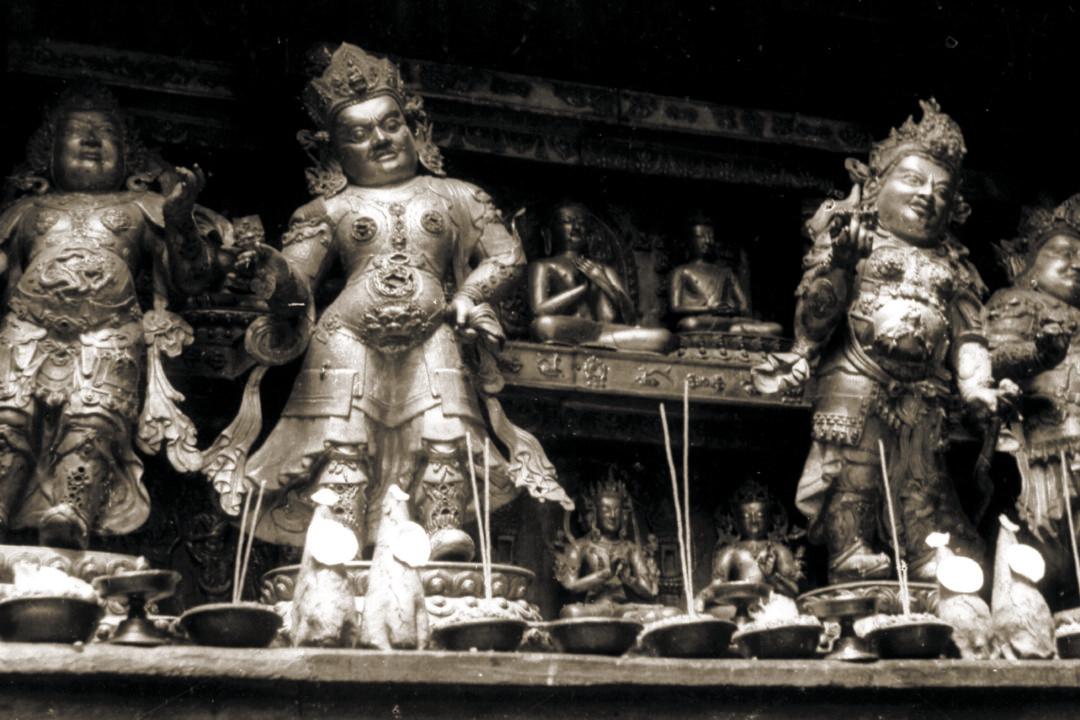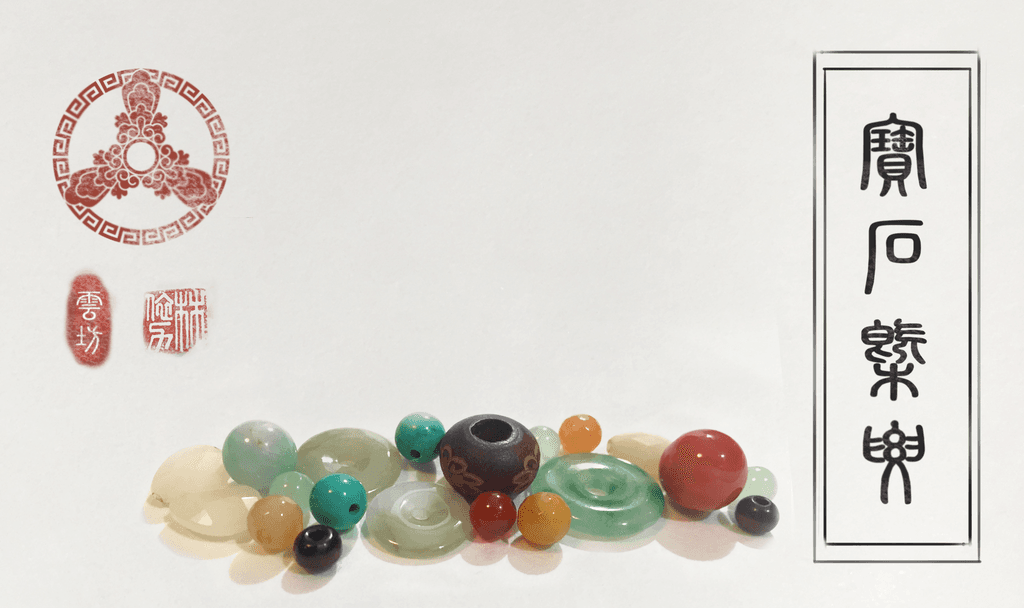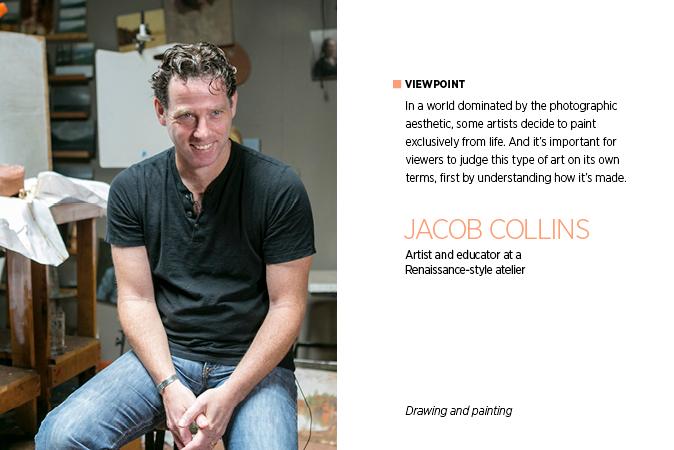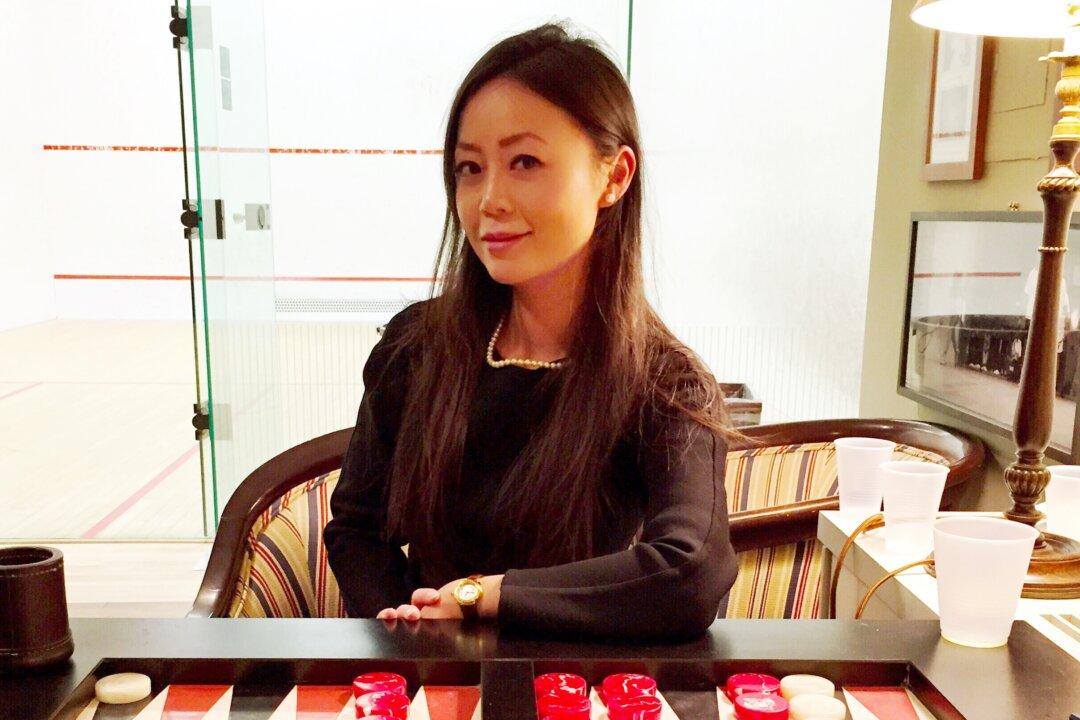NEW YORK—We look to images of deities, in part, for spiritual comfort. We expect their sculptural and painted representations to appear calm, compassionate, collected; and when we stand before them, we hope some of that noble feeling will inspire us. Think of how artists have historically depicted Saint Mary or the Buddha.
If as a genre, religious iconography could border on placid, the gilded sculptures of Densatil break the mold.
Expressively articulated faces and full bodies are alive with individuality and movement. Goddesses dance and drum in a line with flutes and vajras, the rhythm of their variously posed limbs keeping time. Protectors of the Buddhist teachings kneel, dancelike, with arms raised as if in offering. Wrathful deities with wide stances tower over evil beings, sabers and other weapons at the ready.
This bounty of sculptural excellence comes from Densatil, one of central Tibet’s lost monasteries and the subject of the Asia Society Museum’s newly opened exhibit. On display are some surviving sculptures sourced from private collections and museums in Europe and North America, along with photos from the last documented visit to the monastery, which was in 1948.
The Rise and Fall of Densatil
Densatil, it is said, came by divine inspiration. Jigten Gonpo (1143–1217) was the founder of one of the six main schools of Tibetan Buddhism. One day in meditation, he saw in a vision the location where a monastery was to be built, 13,000 feet high in the Pure Crystal Mountains on the border with India.
The Tantric deity Chakrasamvara appeared in his vision, escorted by 2,800 deities in tiers beneath him. The towering shape formed by the group inspired the tashi gomang structure, the first of which was erected in Drigung Monastery in central Tibet.
A grand council decided in 1198 that Densatil was to be built, and the project began, with each student responsible for a part of the building. Densatil’s first tashi gomang was built in the 1270s.
In 1290, war broke out between the Drigung Kagyu school and the Sakya school of Tibetan Buddhism. The original tashi gomang at Drigung was lost in a fire.
It must be understood that “throughout the history of Buddhist Tibet, various schools/orders vied for religious and political power,” wrote co-curator Adriana Proser in an email. “This resulted in all kinds of political intrigue and even bloody battles at times. There was no separation of church and state.”
Guest curator Olaf Czaja has written extensively on the subject in his book “Medieval Rule in Tibet.”
Luckily, the building of tashi gomang at Densatil continued through the 1300s, with the eighth and last built in the 1430s.
However, Densatil was destroyed during China’s Cultural Revolution, which did irreparable damage to the culture of Tibet. By the end of the revolution, only a handful of monasteries and temples survived out of the thousands believed to have existed.
Monasteries, besides being the repositories for some of Tibetan culture’s greatest works of art, also served as administrative, scientific, medical, and educational centers.
At the Foot of a Golden Tower
The last Westerners to see Densatil before its demise were Italian scholar Giuseppe Tucci and photographer Pietro Francesco Mele, in 1948.
Tucci had taught himself Sanskrit and Chinese and spent more than 20 years documenting his travels through Tibet, collecting important texts, and visiting cultural sites.
At Densatil, they discovered the tashi gomang, a unique type of stupa developed there.
These structures tower over 10 feet high and are large enough that one must circumambulate them to get the full visual effect. Conceptualized as three-dimensional mandalas on wooden supports, tashi gomang are built to commemorate abbots who enlightened.
The organization of the tashi gomang’s many tiers is based on each set of deities’ status in the religion, and is not to be mistaken to represent the rankings among gods. At the lowest rung are protectors of the teachings, above them are offering goddesses, and above them still are Buddhas and meditational deities.
At the very top are the abbot’s relics, housed in a stupa surrounded by a ring of Indian and Tibetan teachers relevant to the school’s lineage.
Little is known about why specific deities are placed on each tashi gomang, and whether they had some personal or spiritual relevance to the abbot for whom it was built, according to Proser.
Since 1997, through foreign aid and local support, the monastery has begun to be rebuilt, but with increased traffic from mainland China and abroad, places of contemplation and worship are increasingly frequented as tourist destinations. Tucci and Mele’s visit has proven to be crucial to our limited understanding of Densatil as it was.
Golden Visions of Densatil: A Tibetan Buddhist Monastery
Through May 18
Asia Society Museum
725 Park Avenue
212-288-6400
$7–$12; asiasociety.org






